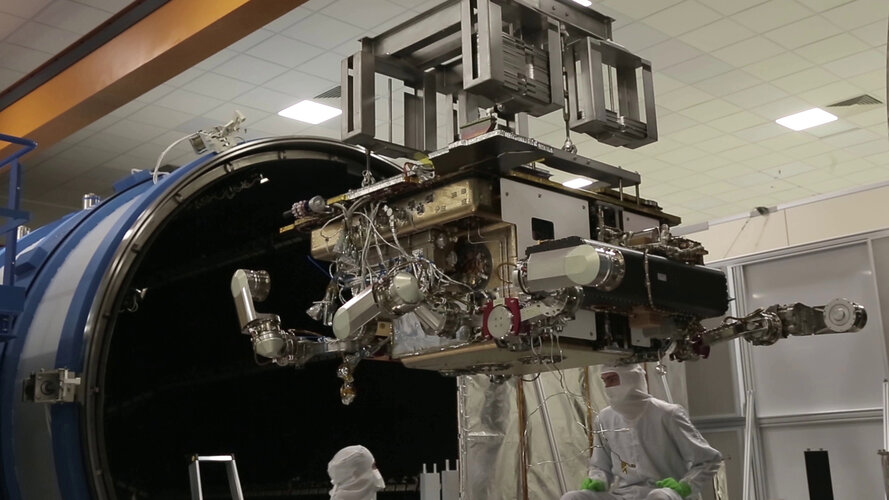The Rosalind Franklin rover that will search for life on Mars has completed an important bakeout to help clean the rover from organic molecules from Earth.
The rover sat inside a vacuum chamber for 120 hours at 35ºC at the Thales Alenia Space facility in Rome, Italy. The temperature is enough to sublimate hidden contaminants generated by the off-gassing of some of the rover’s internal parts, such as small bits of glue. The goal is to reduce as much as possible any contamination signature of Earth origin, to allow a clean detection of organic compounds on Mars.
An additional analysis following the bakeout will be completed at a later date. That is, the rover’s Mars Organics Molecule Analyser (MOMA), one of the instruments inside the rover’s analytical laboratory ultra-clean zone that will be used to determine if signs of life are present in the martian soil, will determine the chemical background in the rover’s laboratory by performing a measurement using an empty oven. Once on Mars, MOMA’s tiny ovens will host crushed soil samples that will be heated to allow the resulting vapour and gases to be analysed with gas chromatography techniques to sniff out traces of organic compounds. The ‘sniff’ of the empty oven following the Earth-based bakeout will establish the background footprint against which future measurements on Mars can be compared.
The rover is equipped with a unique drill that will bore down to 2 m below the martian surface and return samples for analysis. In the video, the rover is seen with its drill box in horizontal stowed position at the front. The drill tool also hosts a miniaturized spectrometer (Ma_MISS) to analyse the inner surface of the borehole, and a close-up imager (CLUPI) that will look at the drill fines and core sample before it enters the rover’s laboratory.
Different instruments will work together to analyse the samples inside the rover. In addition to MOMA, the MicrOmega instrument will use visible and infrared light to characterise minerals in the samples, and a Raman spectrometer will use a laser to identify mineralogical composition.
Using its panoramic and high resolution cameras and ground-penetrating radar, the ExoMars rover will seek out the most promising locations to drill, and to better understand the geological context of the Oxia Planum region that it will explore.
Following completion of the bakeout, the thermo-vacuum chamber was re-pressurised and opened, and the rover prepared for its return journey to Thales Alenia Space in Turin. There, readiness for launch will continue until it ships to the launch site next year.
Parts of the video are shown as timelapse.



 Video:
00:00:43
Video:
00:00:43